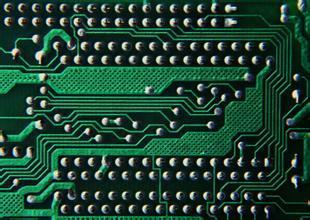-
CN
-
Service Hotline
+8618129931046 Mr. Liao


Time:2025-11-06 Views:1

PCB (Printed Circuit Board) design modification is a critical iterative process in electronics development—addressing design flaws, optimizing performance, or adapting to component changes (e.g., part obsolescence) while ensuring the final board meets electrical, mechanical, and manufacturing requirements. Unlike initial PCB design (which follows a linear workflow), modifications require careful planning to avoid introducing new issues (e.g., signal interference, thermal hotspots) and to minimize rework costs. This process is essential for products across industries, from consumer electronics (smartphones) to industrial equipment (control systems).
The PCB design modification workflow follows four key steps: 1) Change Request & Analysis: Start with a formal change request (CR) documenting the reason for modification (e.g., “fix USB signal reflection” or “replace obsolete resistor”), impact assessment (e.g., cost, timeline, component compatibility), and approval from stakeholders (designers, engineers, manufacturers). For example, if a prototype test reveals excessive heat in a power module, the CR would outline modifying the PCB’s copper trace width or adding a heat sink pad. 2) Design Adjustment: Use EDA (Electronic Design Automation) tools (e.g., Altium Designer, KiCad) to implement changes. Key considerations include: - Electrical Integrity: For signal-related modifications (e.g., adjusting trace impedance), run simulations (SI/PI analysis) to ensure no new signal integrity or power integrity issues. - Mechanical Compatibility: If modifying component footprints (e.g., replacing a DIP chip with an SMD version), check the PCB’s mechanical layout (e.g., clearance to other components, mounting holes) to avoid fitment problems. - Manufacturing Feasibility: Ensure changes comply with DFM (Design for Manufacturability) rules (e.g., minimum trace width of 0.15mm for standard PCBs, minimum via size of 0.3mm) to prevent production delays. 3) Validation & Testing: After modification, generate updated Gerber files and perform design rule checks (DRC) to catch errors (e.g., short circuits, missing connections). For critical changes (e.g., power circuit adjustments), build a prototype and conduct tests (e.g., voltage testing, thermal imaging) to verify performance. 4) Documentation & Handover: Update design documents (schematic diagrams, BOMs, assembly drawings) to reflect modifications, and share the revised files with the manufacturing team—including a change log detailing what was modified, why, and when.
A consumer electronics manufacturer reported that a structured modification process reduced prototype rework by 40% when updating a smartphone PCB to support a new 5G chip. Common pitfalls to avoid include: skipping DRC checks (leading to manufacturing errors), ignoring thermal impacts (causing component overheating), and failing to document changes (creating confusion during production). For complex PCBs (e.g., multi-layer boards with high-speed signals), involving manufacturing and testing teams early in the modification process ensures the design is both functional and producible.